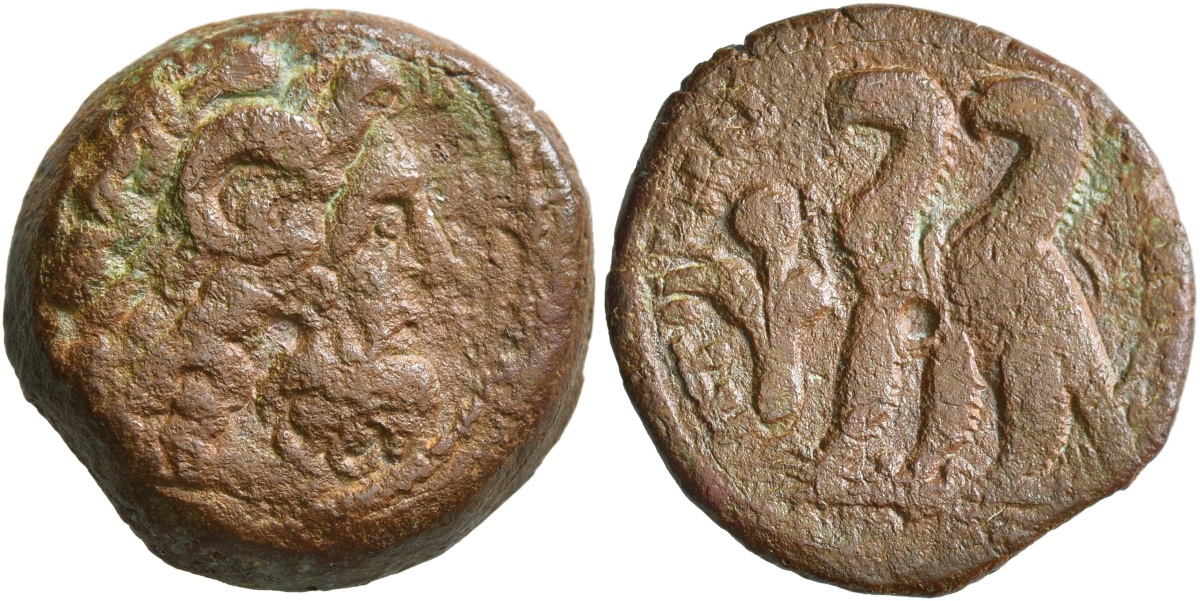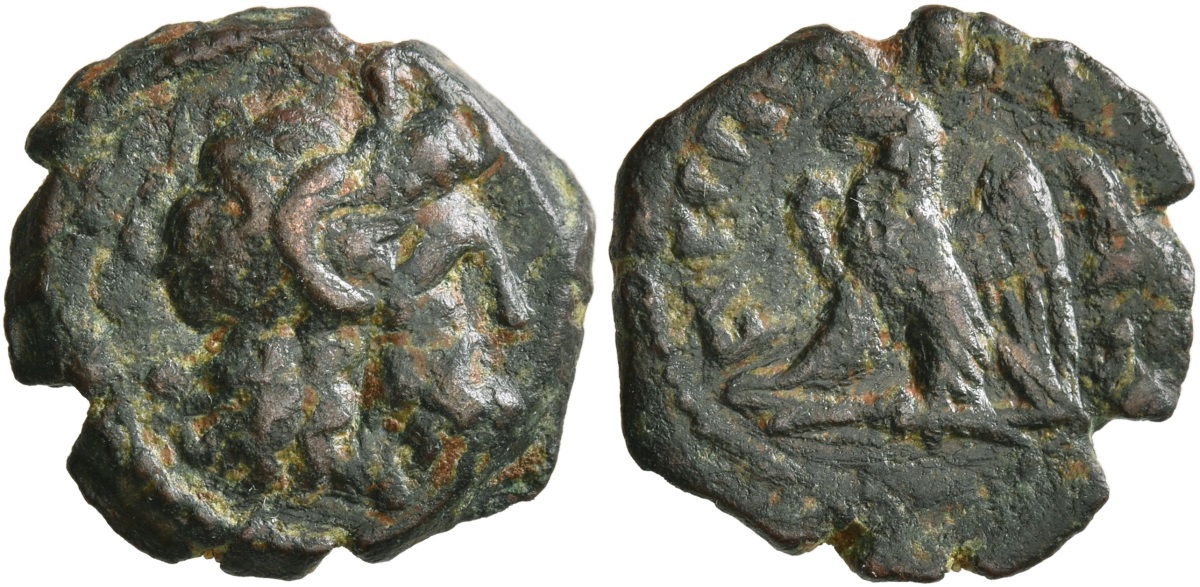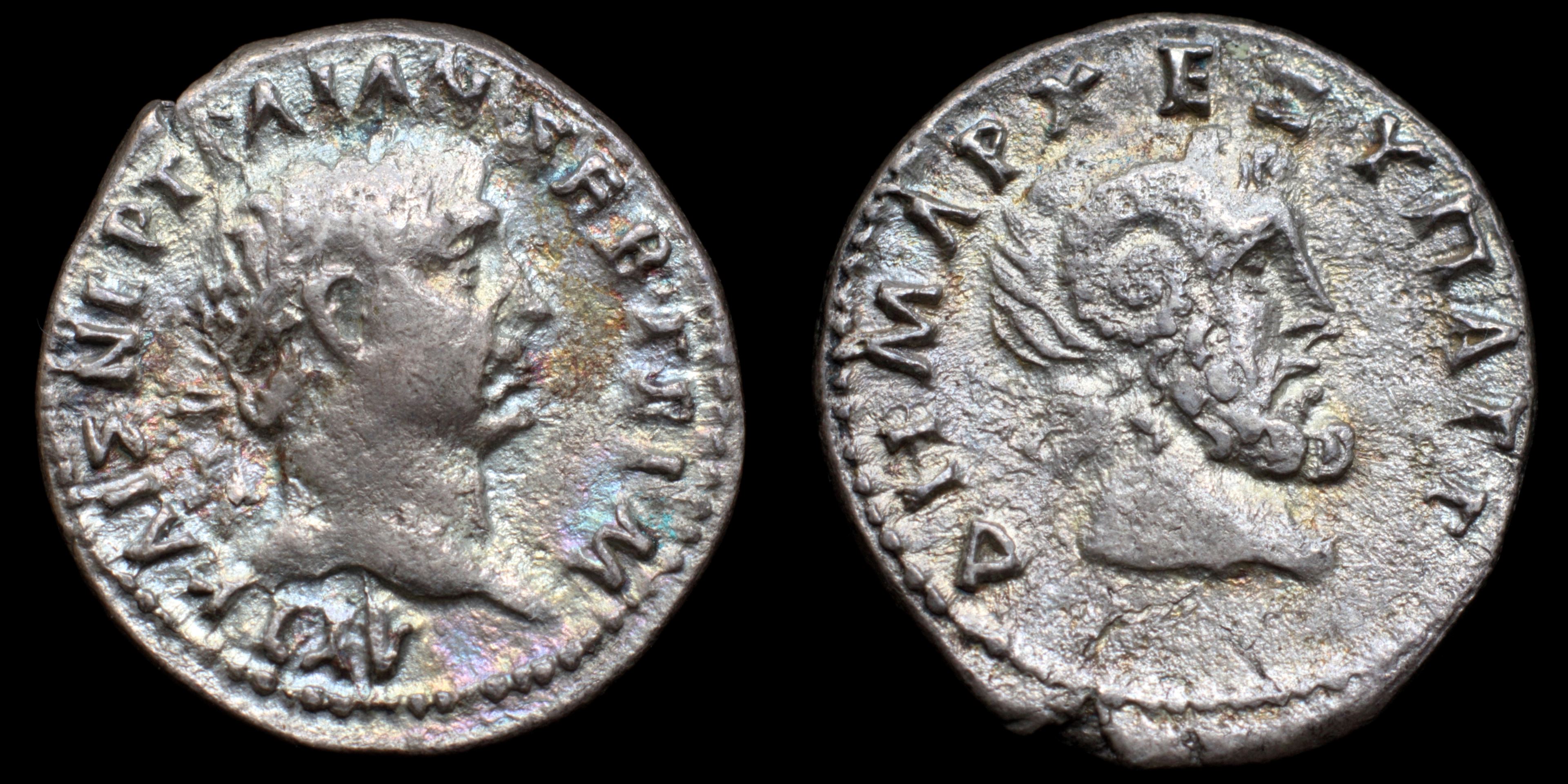Cyrene was an ancient Greek and Roman city near present-day Shahhat, Libya. It was the oldest and most important of the five Greek cities in the region. It gave eastern Libya the classical name Cyrenaica that it has retained to modern times. Located nearby is the ancient Necropolis of Cyrene.
According to Greek tradition, Cyrene was founded in 631 BC as a settlement of Greeks from the island of Thera. It promptly became the chief town of Libya and established commercial relations with all the Greek cities, reaching the height of its prosperity under its own kings in the 5th century BC. Soon after 460 BC it became a republic. In 413 BC, during the Peloponnesian War, Cyrene supplied Spartan forces with two triremes and pilots. After the death of Alexander the Great (323 BC), the Cyrenian republic became subject to the Ptolemaic dynasty.
In 74 BC Cyrene was created a Roman province; but, whereas under the Ptolemies the Jewish inhabitants had enjoyed equal rights, they were allegedly increasingly oppressed by the now autonomous and much larger Greek population. Tensions came to a head in the insurrection of the Jews of Cyrene under Vespasian (73 AD, the First Jewish–Roman War) and especially Trajan (117 AD, the Kitos War).
Cyrene's chief local export through much of its early history was the medicinal herb silphium, used as an abortifacient; the herb was pictured on most Cyrenian coins. Silphium was in such demand that it was harvested to extinction; this, in conjunction with commercial competition from Carthage and Alexandria, resulted in a reduction in the city's trade.
According to Greek tradition, Cyrene was founded in 631 BC as a settlement of Greeks from the island of Thera. It promptly became the chief town of Libya and established commercial relations with all the Greek cities, reaching the height of its prosperity under its own kings in the 5th century BC. Soon after 460 BC it became a republic. In 413 BC, during the Peloponnesian War, Cyrene supplied Spartan forces with two triremes and pilots. After the death of Alexander the Great (323 BC), the Cyrenian republic became subject to the Ptolemaic dynasty.
In 74 BC Cyrene was created a Roman province; but, whereas under the Ptolemies the Jewish inhabitants had enjoyed equal rights, they were allegedly increasingly oppressed by the now autonomous and much larger Greek population. Tensions came to a head in the insurrection of the Jews of Cyrene under Vespasian (73 AD, the First Jewish–Roman War) and especially Trajan (117 AD, the Kitos War).
Cyrene's chief local export through much of its early history was the medicinal herb silphium, used as an abortifacient; the herb was pictured on most Cyrenian coins. Silphium was in such demand that it was harvested to extinction; this, in conjunction with commercial competition from Carthage and Alexandria, resulted in a reduction in the city's trade.
Modern location: Shahhat, Libya
(1)
Cleopatra III with Ptolemy IX Soter II (Lathyros)

Obverse: Diademed head of Zeus Ammon to right, with ram's horn in his hair and over the diadem
Reverse: ΒΑΣΙΛΕΩΣ ΠTΟΛΕΜΑΙΟΥ Two eagles with closed wings standing left on thunderbolt; to left, silphium plant
Diameter:
19 mm
Die Orientation: 12 H
Weight: 6.59 g
Die Orientation: 12 H
Weight: 6.59 g
From the Rhakotis collection
SNG Copenhagen 455 ('Ptolemy VIII - Ptolemy Apion'). Svoronos 1158 ('Ptolemy IV'). Weiser -
(2)
Ptolemy VIII
.jpg)
An
AE
Hemidrachm
|
Triobol
struck 163-145 BC
in
Cyrene
Obverse: Diademed head of Zeus-Ammon right
Reverse: BAΣIΛEΩΣ ΠTOΛEMAIOY EYEPΓETOY, eagle standing right on thunderbolt, wings spread; Φ to right
Diameter:
44 mm
Die Orientation: 11 H
Weight: 38.36 g
Die Orientation: 11 H
Weight: 38.36 g
No notes for this coin
SNG Copenhagen 651; Svoronos 1641
(3)
Ptolemy VIII

Obverse: Diademed head of Zeus Ammon to right, with ram's horn in his hair and over the diadem
Reverse: BA[ΣIΛEΩΣ ΠTOΛ] ΕΥΕΡΓΕΤΟΥ Eagle with spread wings standing left on thunderbolt
Diameter:
15 mm
Die Orientation: 12 H
Weight: 2.08 g
Die Orientation: 12 H
Weight: 2.08 g
From the Rhakotis collection
Noeske 291-6 ('uncertain mint in Cyprus'). SNG Copenhagen 658-9 ('uncertain mint in Cyprus'). Svoronos 1655 ('Alexandria'). Weiser -
(4)
Trajan

An
AR
Hemidrachm
struck 100 AD
in
Cyrene
|
Caesarea (Cappadocia)
Obverse: Laureate head of right; AYT KAIΣ NEP TPAIAN ΣEB ΓEPM
Reverse: Head of Zeus-Ammon right; ΔHMAPX·EΞ·YΠAT·Γ
Diameter:
15 mm
Die Orientation: -
Weight: 1.51 g
Die Orientation: -
Weight: 1.51 g
No notes for this coin
BMC 57-58. Sydenham 176
